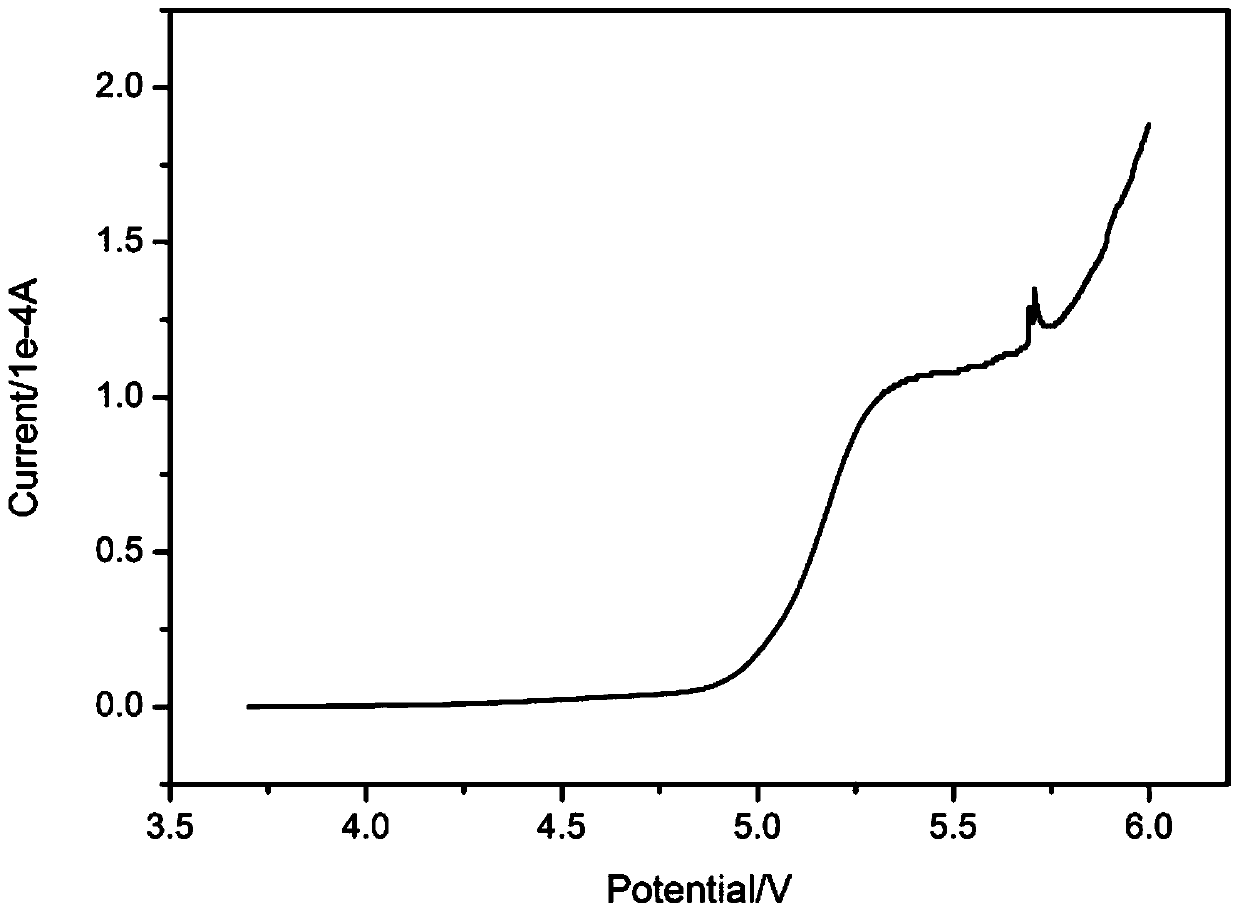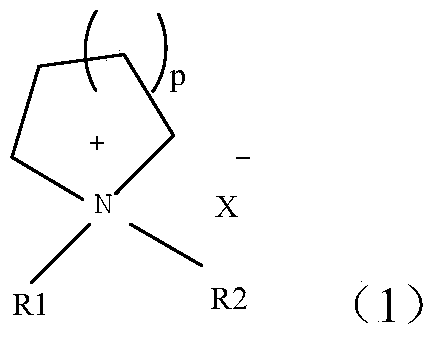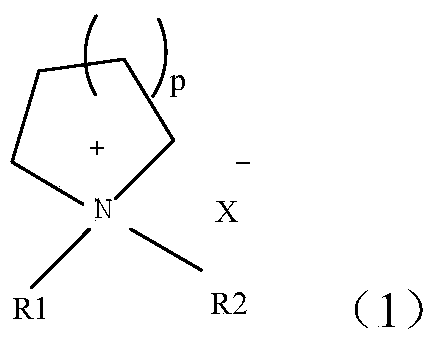High voltage electrolyte for lithium ion battery
A lithium-ion battery, electrolyte technology, applied in secondary batteries, circuits, electrical components, etc., can solve problems such as shortening battery life, battery structure changes, and difficulty meeting requirements
- Summary
- Abstract
- Description
- Claims
- Application Information
AI Technical Summary
Problems solved by technology
Method used
Image
Examples
Embodiment 1
[0023] Weigh fluoroethylene carbonate, methyl-2,2,2-trifluoroethyl carbonate, and ethyl methyl carbonate at a mass ratio of 4:1:15 to form an organic mixture; add N-butylene to the mixture in turn Base, methylpyrrolidine (trifluoromethylsulfonyl) imide salt, vinylene carbonate, which account for 2% and 1.5% of the total mass respectively; finally slowly add 1M / L lithium hexafluorophosphate and stir to obtain the mixture of Example 1 Li-ion battery high voltage electrolyte. The electrolytic solution has an oxidation potential of 4.9-5.0V measured on a metal platinum electrode by using a three-electrode system.
Embodiment 2
[0025] Weigh fluoroethylene carbonate, ethyl methyl carbonate, and γ-butyrolactone in a mass ratio of 2:7:1 to form an organic mixture; add N-butyl, methylpyrrolidine (trifluoromethyl) to the mixture in turn Sulfonyl)imide salt, vinylene carbonate, which account for 2% and 1% of the total mass respectively; finally slowly add 0.9M / L lithium hexafluorophosphate and 0.1M / L lithium bisoxalate borate and stir to obtain the product of Example 2 Li-ion battery high voltage electrolyte. The electrolytic solution adopts a three-electrode system to measure the oxidation potential on the metal platinum electrode to be 5.0V.
Embodiment 3
[0027] Weigh fluoroethylene carbonate and ethyl methyl carbonate to make an organic mixture according to the mass ratio of 1:4; add N-butyl, methylpiperidinium (trifluoromethylsulfonyl) imide salt to the mixture in turn , vinylene carbonate, vinyl sulfite, which account for 2%, 1% and 0.5% of the total mass respectively; finally slowly add 0.9M / L lithium hexafluorophosphate and 0.1M / L bis(trifluoromethylsulfonyl)imide After stirring the lithium evenly, the high-voltage electrolyte solution for the lithium-ion battery of Example 3 was obtained. The electrolytic solution adopts a three-electrode system to measure the oxidation potential on the metal platinum electrode to be 4.95V.
PUM
| Property | Measurement | Unit |
|---|---|---|
| Oxidation potential | aaaaa | aaaaa |
Abstract
Description
Claims
Application Information
 Login to View More
Login to View More - R&D
- Intellectual Property
- Life Sciences
- Materials
- Tech Scout
- Unparalleled Data Quality
- Higher Quality Content
- 60% Fewer Hallucinations
Browse by: Latest US Patents, China's latest patents, Technical Efficacy Thesaurus, Application Domain, Technology Topic, Popular Technical Reports.
© 2025 PatSnap. All rights reserved.Legal|Privacy policy|Modern Slavery Act Transparency Statement|Sitemap|About US| Contact US: help@patsnap.com



